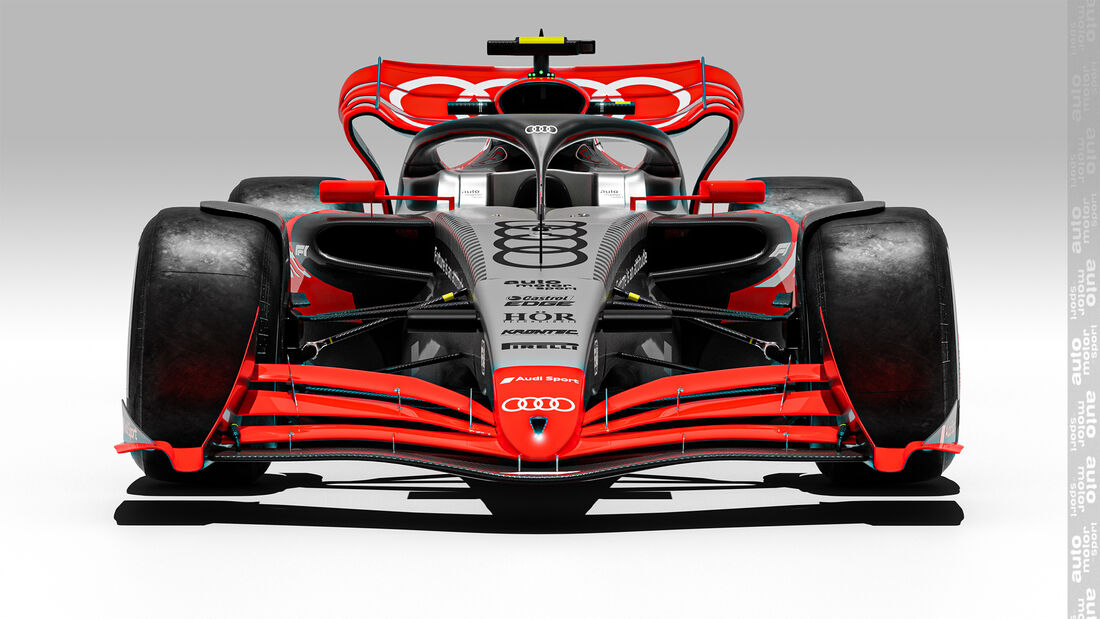Translation:
The Formula 1 car for 2026 is taking on more and more concrete forms. We listened to the paddock and collected information about the planned changes. From this we have created a 3D model that corresponds to the current state of the plans and shows many of the new features. In the gallery you get a first impression of what the future of the premier class will look like.
It has been known for some time that the next F1 generation is driving 50 percent of its electric power. In order to recuperate energy as quickly and reliably as possible, the chassis fraction is also forced to dramatic conversions. Finally, the battery is to contribute 475 hp to the system performance at the end. To do this, the cars must become smaller, lighter and, above all, more efficient.
The FIA presented its latest draft to the technical directors before the GP Mexico. To reduce air resistance, the width is reduced from 200 to 190 centimetres. The size of the rim shrinks from 18 to 16 inches, reducing the diameter and width of the tyres by ten percent.
Active front and rear wing
The diffuser should be restricted at height. The chassis shells “A-A” (behind the nose at the front suspension), “C-C” (back side of the cockpit), the halo and the cockpit are designed slimmer and thus put little front surface in the wind. The baffles introduced in 2022 on the front axle are expected to cover the wheels even more strongly to reduce air turbulence.
Active aerodynamics will further reduce the drag on the straight. At least one DRS effect on the front wing and on the rear wing is intended. The rear wing gets four elements instead of two, one main sheet and three flaps. There are also considerations to make the Beam Wing or the Diffusorkante movable.
At the same time, weight is filed. According to initial plans, the minimum weight should be reduced by 20 kilograms. Now we are even more optimistic on this point. From 25 to as even 30 kilograms, there is currently talk. One aid will be the wheelbase, which is shortened from 360 to 340 centimetres. Smaller cars automatically mean less mass.
“Inwash” concept for more action
Perhaps even simpler suspension layouts should contribute to weight loss. A return to gas springs has been discussed, but the FIA cannot really get excited about this simpler method. There is concern that the teams could discover this as a new battlefield.
However, the FIA does not only have the efficiency in mind. The aerodynamic concept is to change completely. The air is to be kept inside (“Inwash” concept), instead of “outwash” and “downwash”. The first sketches under the project name “Fangio” show that even the end plates of the front wing are so angled that they lead the air inside the wheels.
Vertical baffles are provided in front of the side boxes and in front of the rear wheels on the underbody, with which the flow is also directed inwards. They are intended to help better seal the critical gap between rear tire and diffuser.
Cars not much slower
In order to compensate for the loss of downforce due to a less sharp increase in the diffuser at the rear, the Venturi channels are allowed to start higher at the front input. Under the car, two additional fins can be attached to the left and right before the rise of the diffuser to direct the current more inwards.
According to measurements by the FIA technicians, these measures are to make driving afterwards much easier than the 2022 concept. The turbulence, which a car radiates to the rear with the Inwash principle, are reduced. The slipstream effect should also become bigger. This speaks for more overtaking.
Fears that the cars could slow down three to four seconds and only sail on the straight lines are premature. The recent simulations only yield a slight increase in lap times. This will depend heavily on whether a route is more power-limited or grip-limited. On average, it should not be more than a second.



@bwoah Those scoops are kinda weird.
And I hope that front wing design is more robust than the current one.